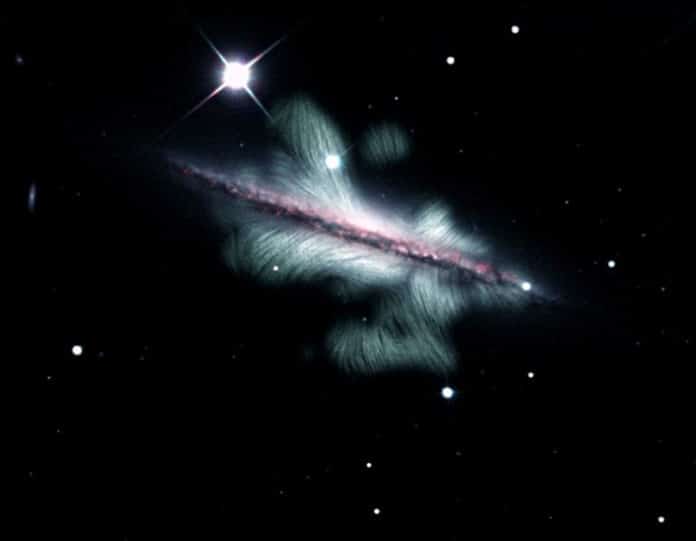Using a combination of different methods, scientists visualized the ordered and chaotic magnetic fields of the galaxy NGC 4217. NGC 4217 is similar to the Milky Way and is only about 67 million light-years away, in the Ursa Major constellation.
The galaxy NGC 4217 boasts a veritable wealth of shapes, including superbubbles, giant loops, and X-shaped magnetic field structures. How such structures are formed is a mystery. This new study offers some clues on it.
An international research team has now analyzed the magnetic field of the Milky Way-like galaxy NGC 4217 in detail based on radio astronomical observations and has found up yet unknown magnetic field structures. The data propose that star formation and star explosions, so-called supernovae, are liable for the visible structures.
Yelena Stein, who began the study at the Chair of Astronomy at Ruhr-Universität Bochum under Professor Ralf-Jürgen Dettmar, said, “The analyzed data had been compiled in the project “Continuum Halos in Nearby Galaxies, where radio waves were utilized to measure 35 galaxies. Galaxy NGC 4217 is of particular interest to us.”
Evaluating the data from NGC 4217, scientists found several remarkable structures. The galaxy has an X-shaped magnetic field structure, which has also been observed in other galaxies, extending far outwards from the galaxy disk, namely over 20,000 light-years.
Also, it has a helix structure, and two large bubble structures, also called superbubbles. The latter originate from places where many massive stars explode as supernovae, but also where stars are formed that emit stellar winds in the process. Scientists, therefore, suspect a connection between these phenomena.
Rainer Beck from MPIfR in Bonn, one of the authors of the study, said, “It is fascinating that we discover unexpected phenomena in every galaxy whenever we use radio polarization measurements. Here in NGC 4217, it is huge magnetic gas bubbles and a helix magnetic field that spirals upwards into the galaxy’s halo.”
Yelena Stein said, “The analysis moreover revealed large loop structures in the magnetic fields along with the entire galaxy. This has never been observed before. We suspect that the structures are caused by star formation because at these points matter is thrown outward.”
“Visualising the data was important to me. Because when you think about galaxies, magnetic fields are not the first thing that comes to mind, although they can be gigantic and display unique structures. The image is supposed to shift the magnetic fields more into focus.”
Journal Reference:
- Y. Stein et al. XXI. Transport processes and the X-shaped magnetic field of NGC 4217: off-center superbubble structure⋆. DOI: 10.1051/0004-6361/202037675
